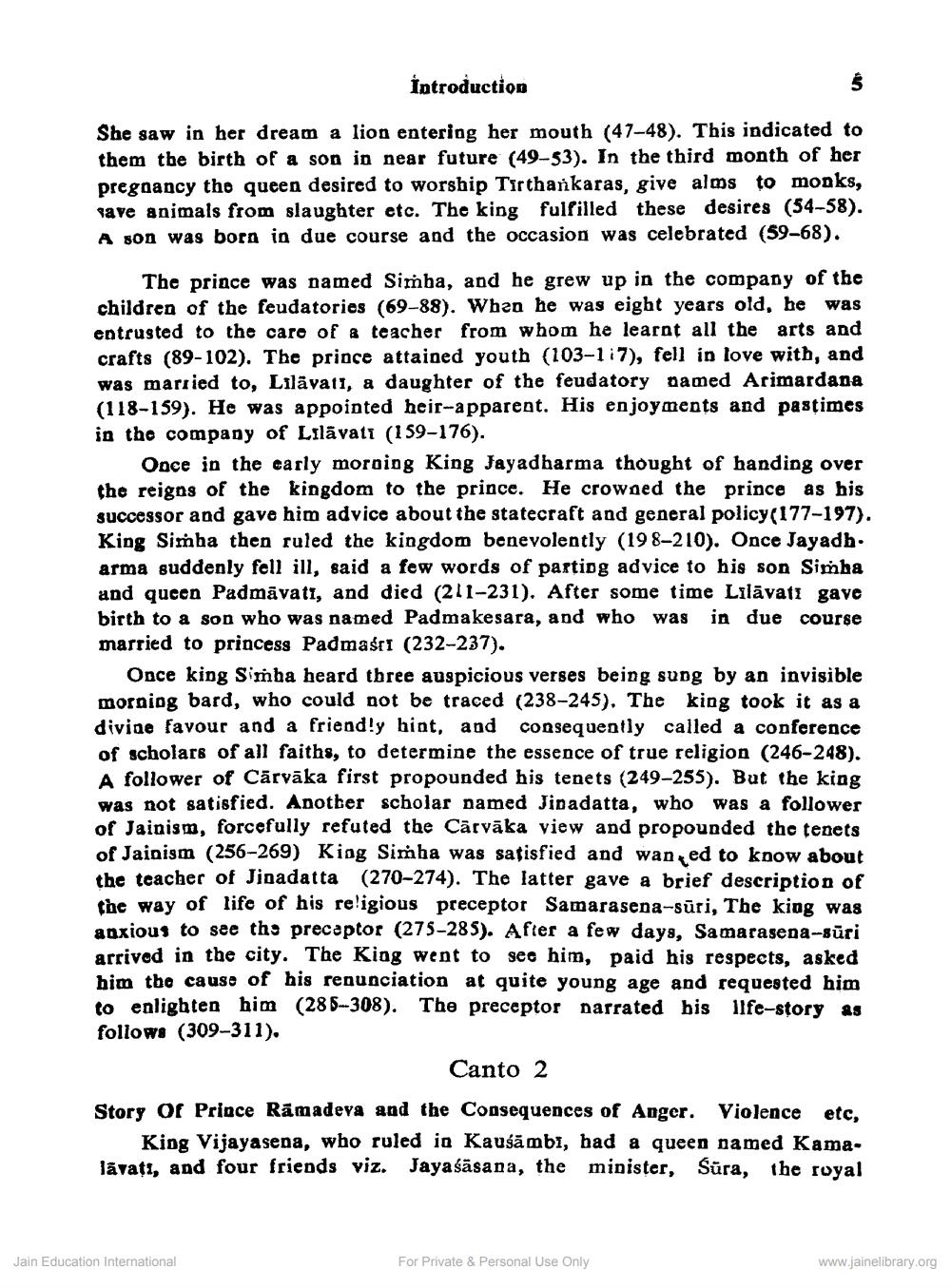________________
Introduction
5
She saw in her dream a lion entering her mouth (47-48). This indicated to them the birth of a son in near future (49-53). In the third month of her pregnancy the queen desired to worship Tirthankaras, give alms to monks, save animals from slaughter etc. The king fulfilled these desires (54-58). A son was born in due course and the occasion was celebrated (59-68).
The prince was named Simha, and he grew up in the company of the children of the feudatories (69-88). When he was eight years old, he entrusted to the care of a teacher from whom he learnt all the arts and crafts (89-102). The prince attained youth (103-117), fell in love with, and was married to, Lilavat, a daughter of the feudatory named Arimardana (118-159). He was appointed heir-apparent. His enjoyments and pastimes in the company of Lilavatı (159-176).
Once in the early morning King Jayadharma thought of handing over the reigns of the kingdom to the prince. He crowned the prince as his successor and gave him advice about the statecraft and general policy(177-197). King Simba then ruled the kingdom benevolently (198-210). Once Jayadharma suddenly fell ill, said a few words of parting advice to his son Simha and queen Padmavati, and died (211-231). After some time Lilavat gave birth to a son who was named Padmakesara, and who was in due course married to princess Padmasrt (232-237).
Once king Simba heard three auspicious verses being sung by an invisible morning bard, who could not be traced (238-245). The king took it as a diviae favour and a friend!y hint, and consequently called a conference of scholars of all faiths, to determine the essence of true religion (246-248). A follower of Cärväka first propounded his tenets (249-255). But the king was not satisfied. Another scholar named Jinadatta, who was a follower of Jainism, forcefully refuted the Cärväka view and propounded the tenets of Jainism (256-269) King Simha was satisfied and waned to know about the teacher of Jinadatta (270-274). The latter gave a brief description of the way of life of his religious preceptor Samarasena-süri, The king was anxious to see the preceptor (275-285). After a few days, Samarasena-sūri arrived in the city. The King went to see him, paid his respects, asked him the cause of his renunciation at quite young age and requested him to enlighten him (285-308). The preceptor narrated his life-story as follows (309-311).
Canto 2
Story Of Prince Ramadeva and the Consequences of Anger. Violence etc, King Vijayasena, who ruled in Kausambi, had a queen named Kamalavati, and four friends viz. Jayaśāsana, the minister, Süra, the royal
Jain Education International
For Private & Personal Use Only
www.jainelibrary.org




